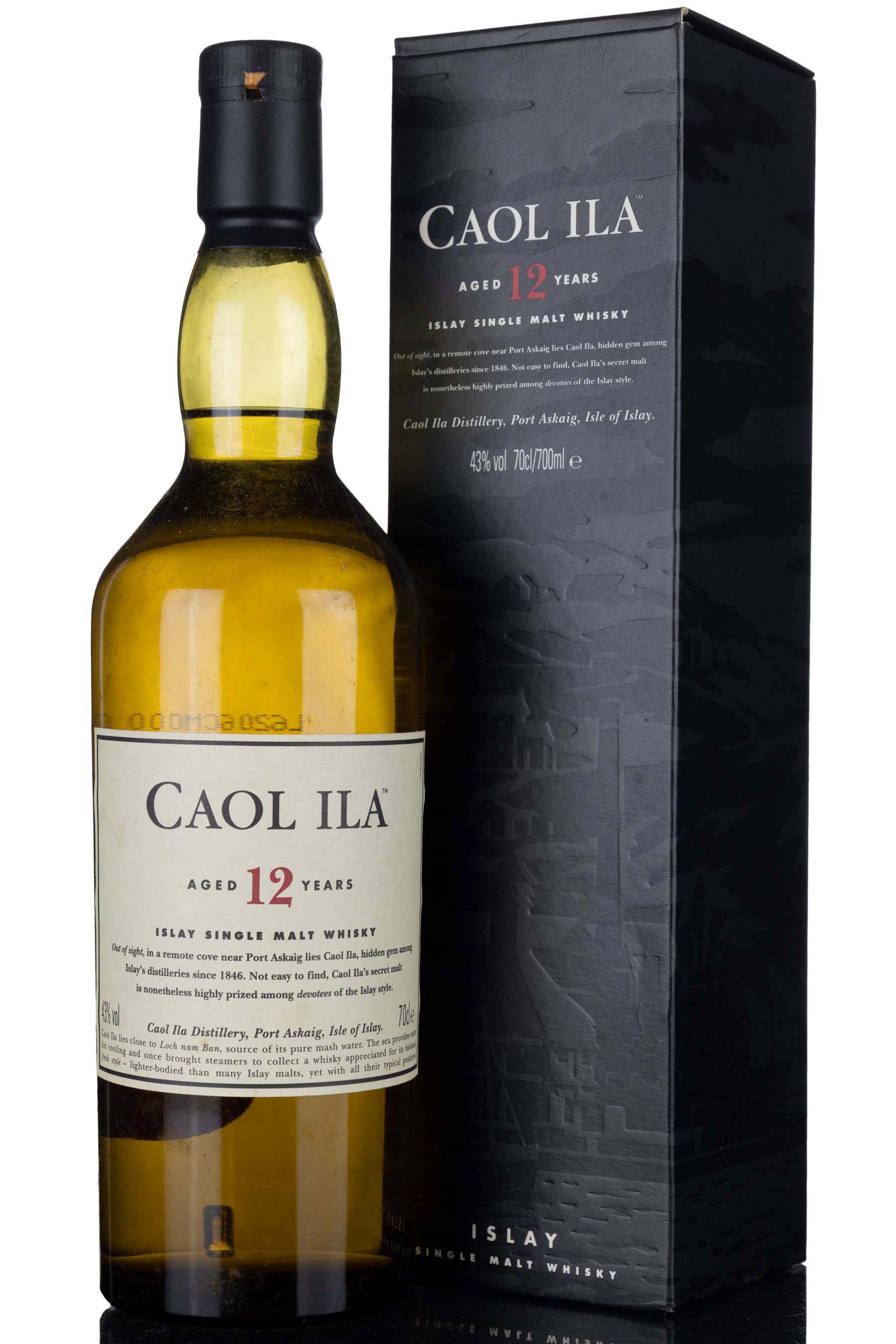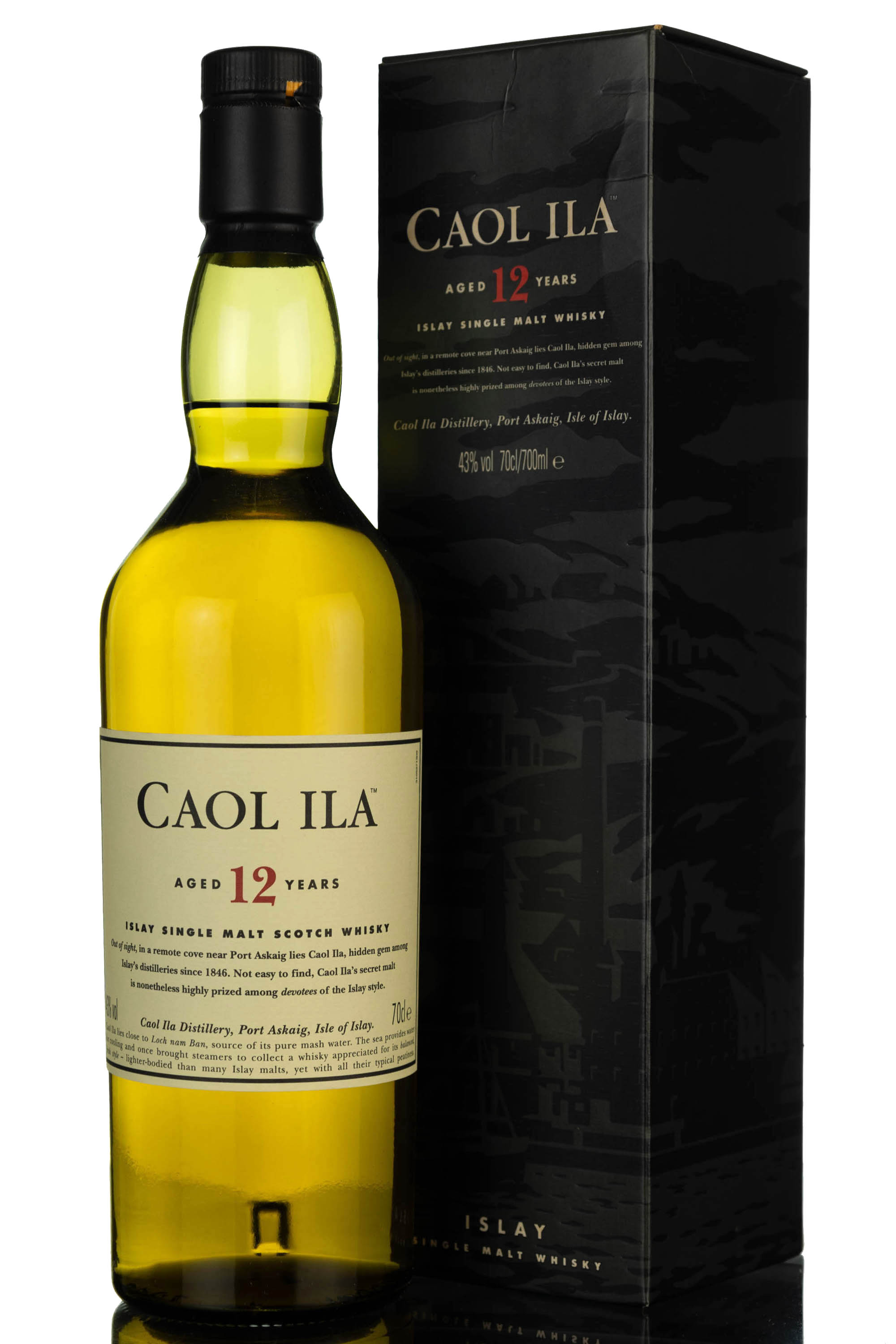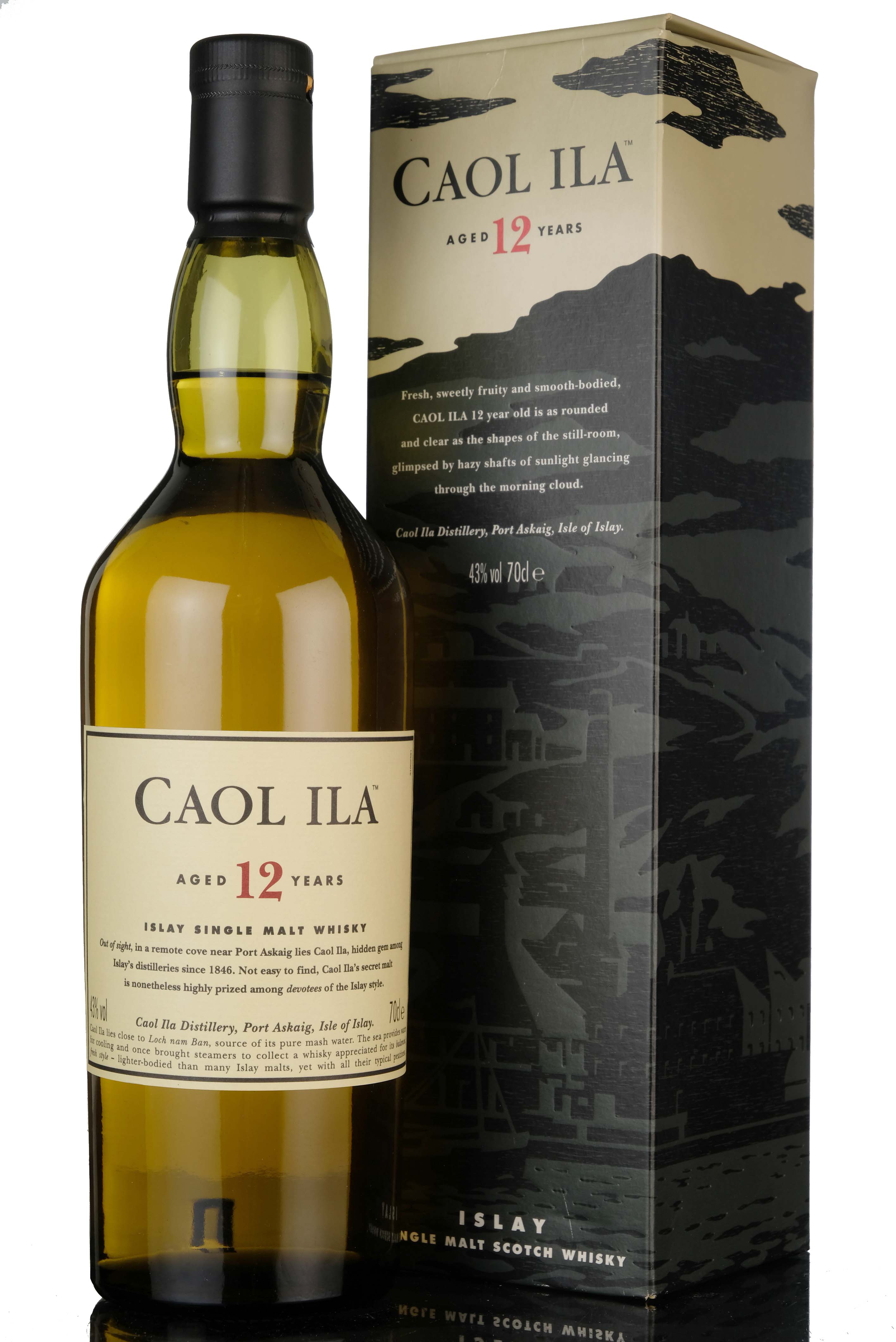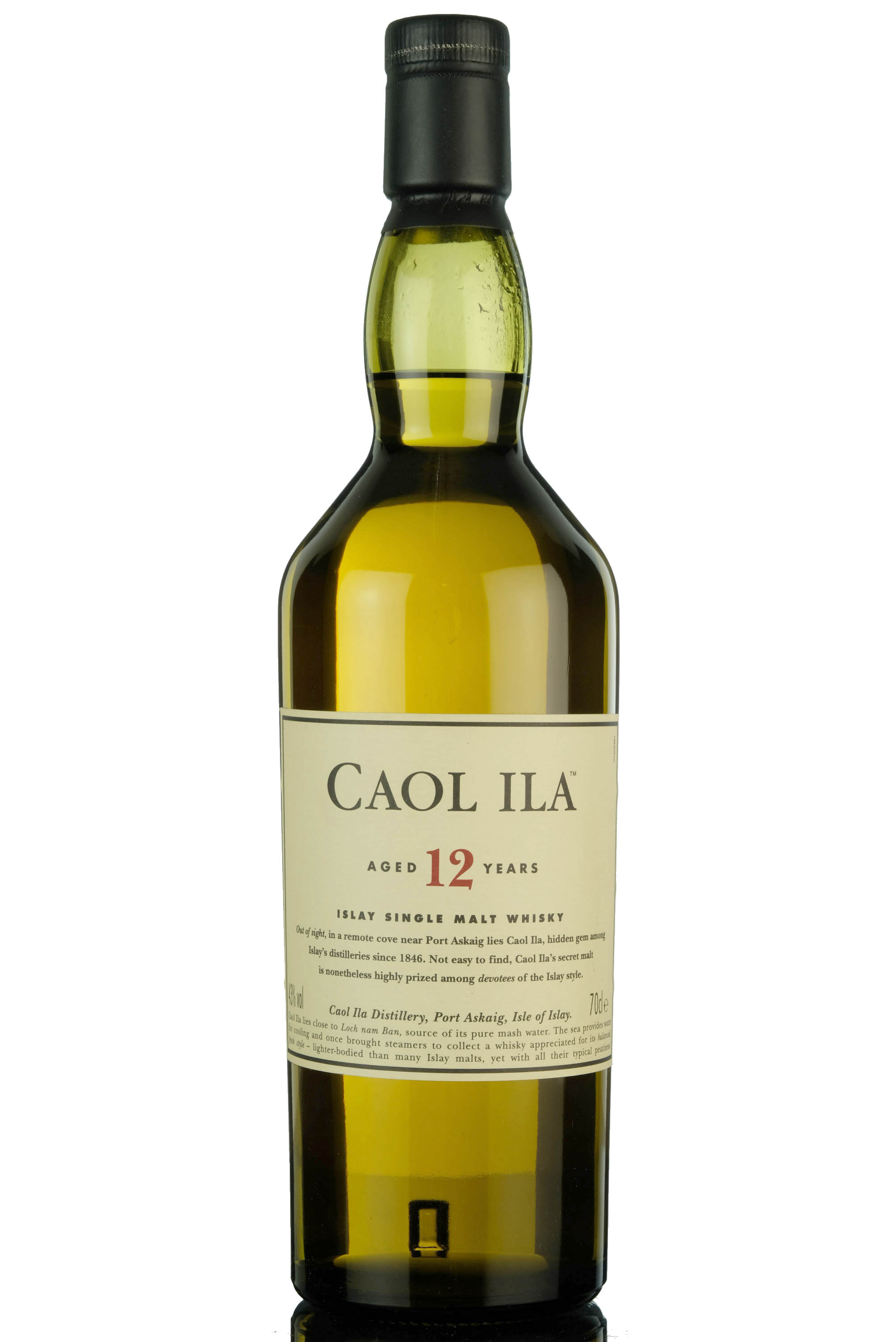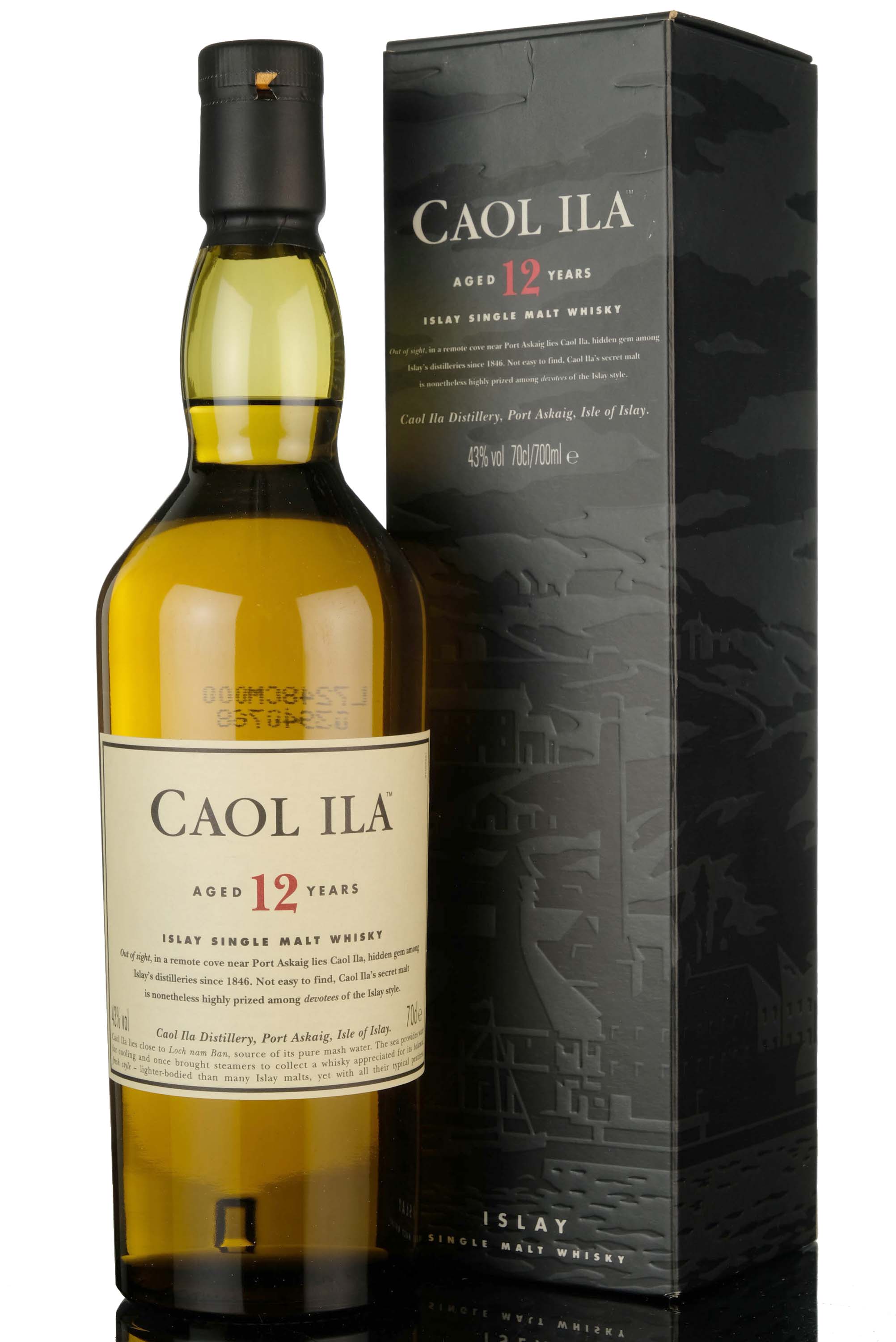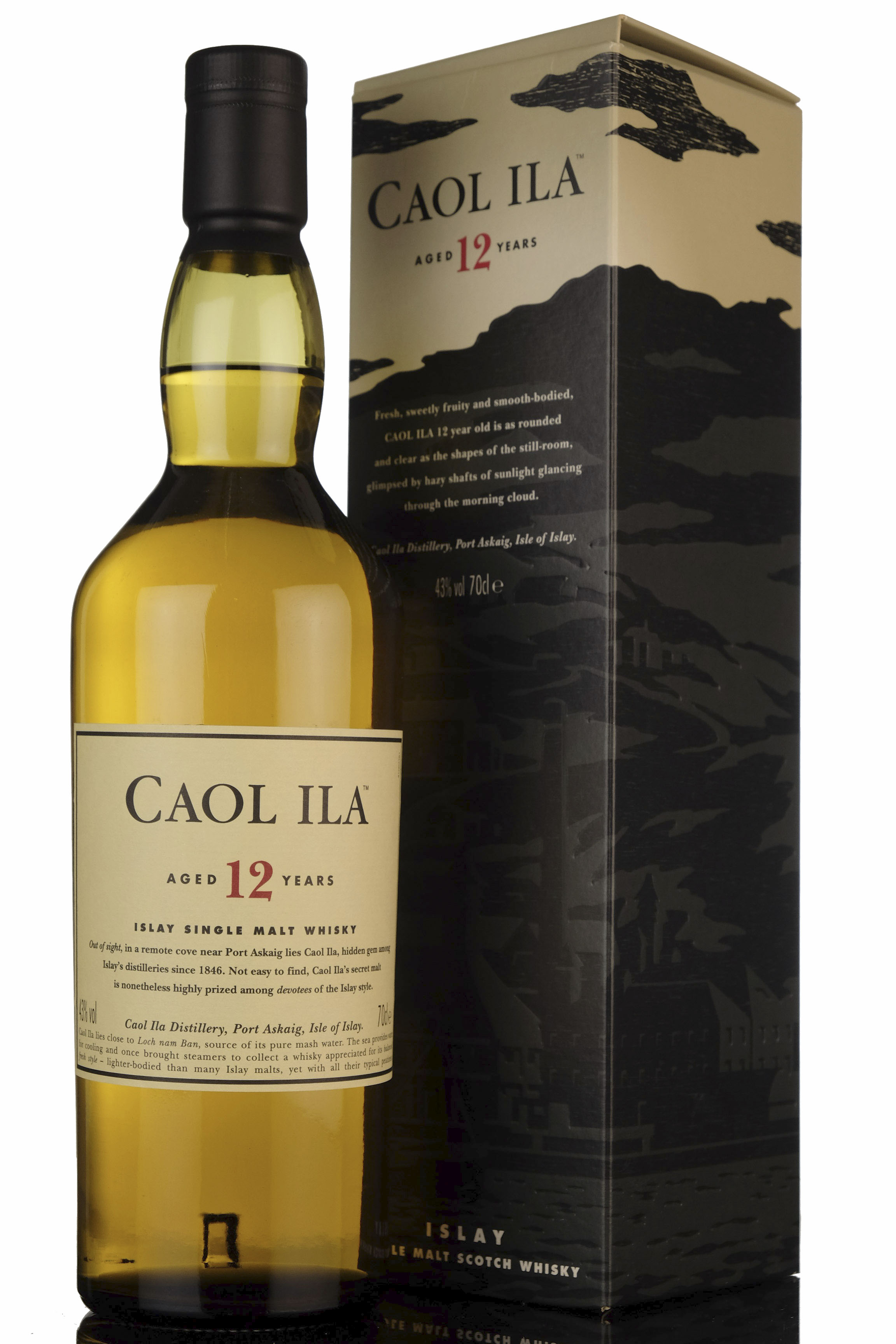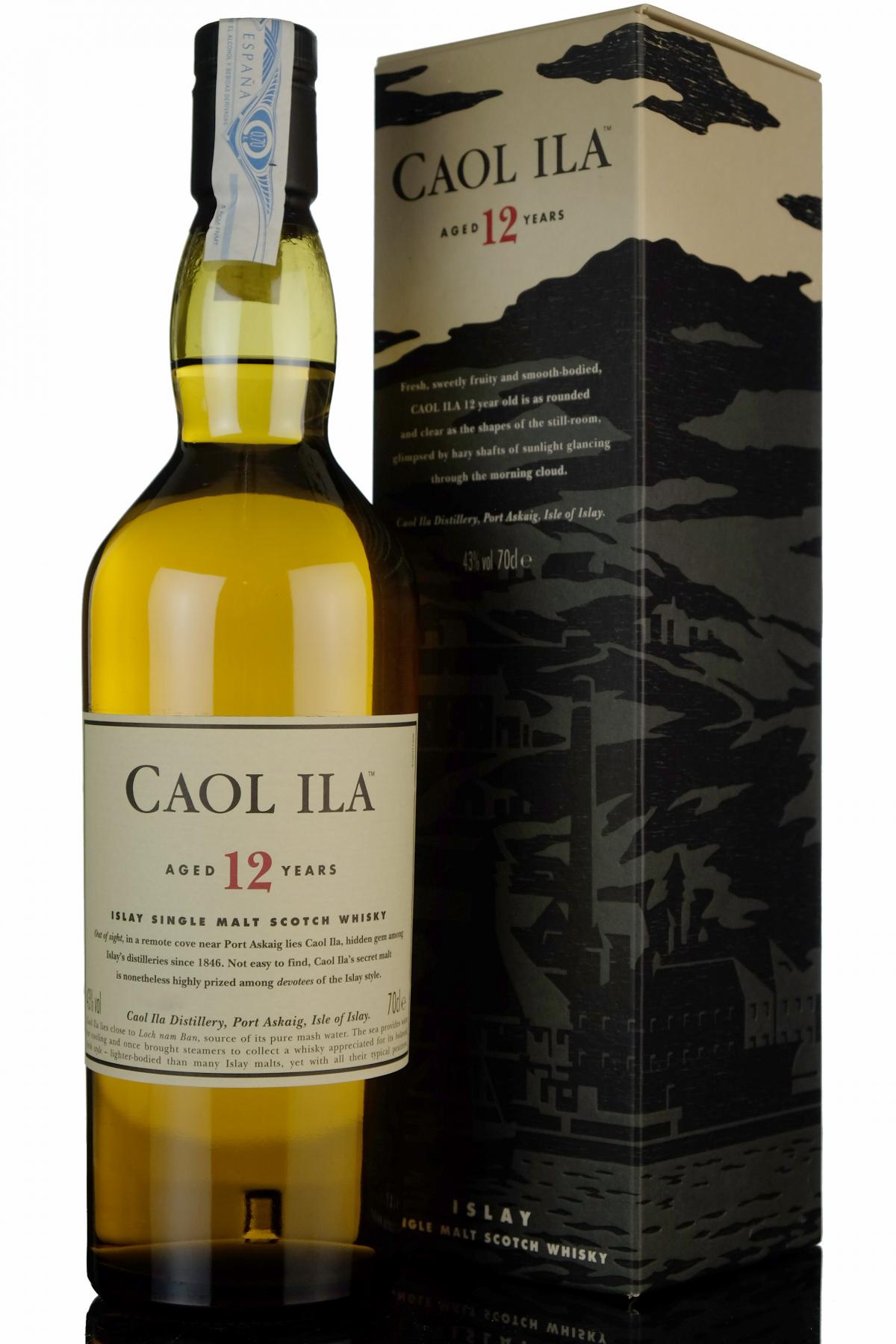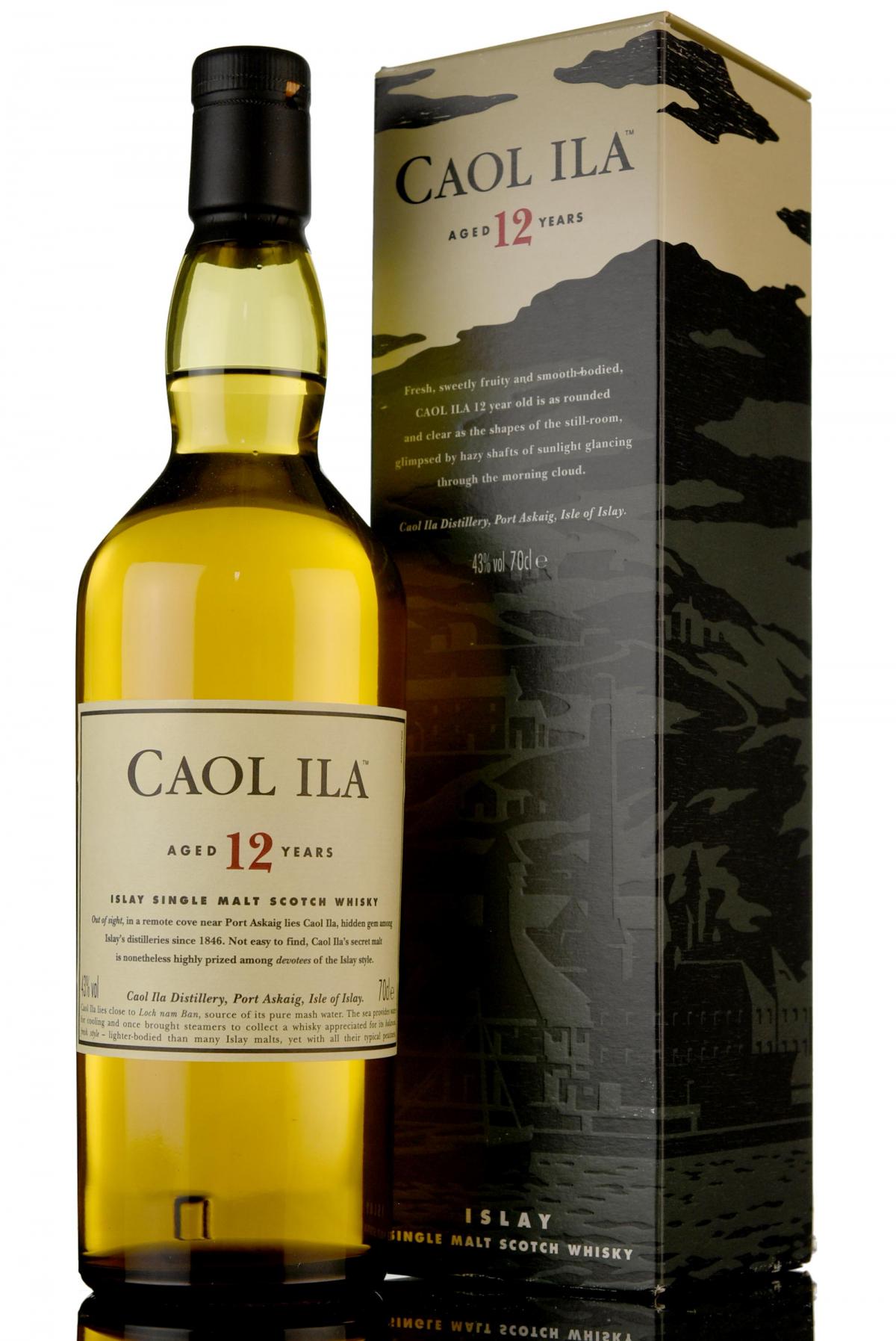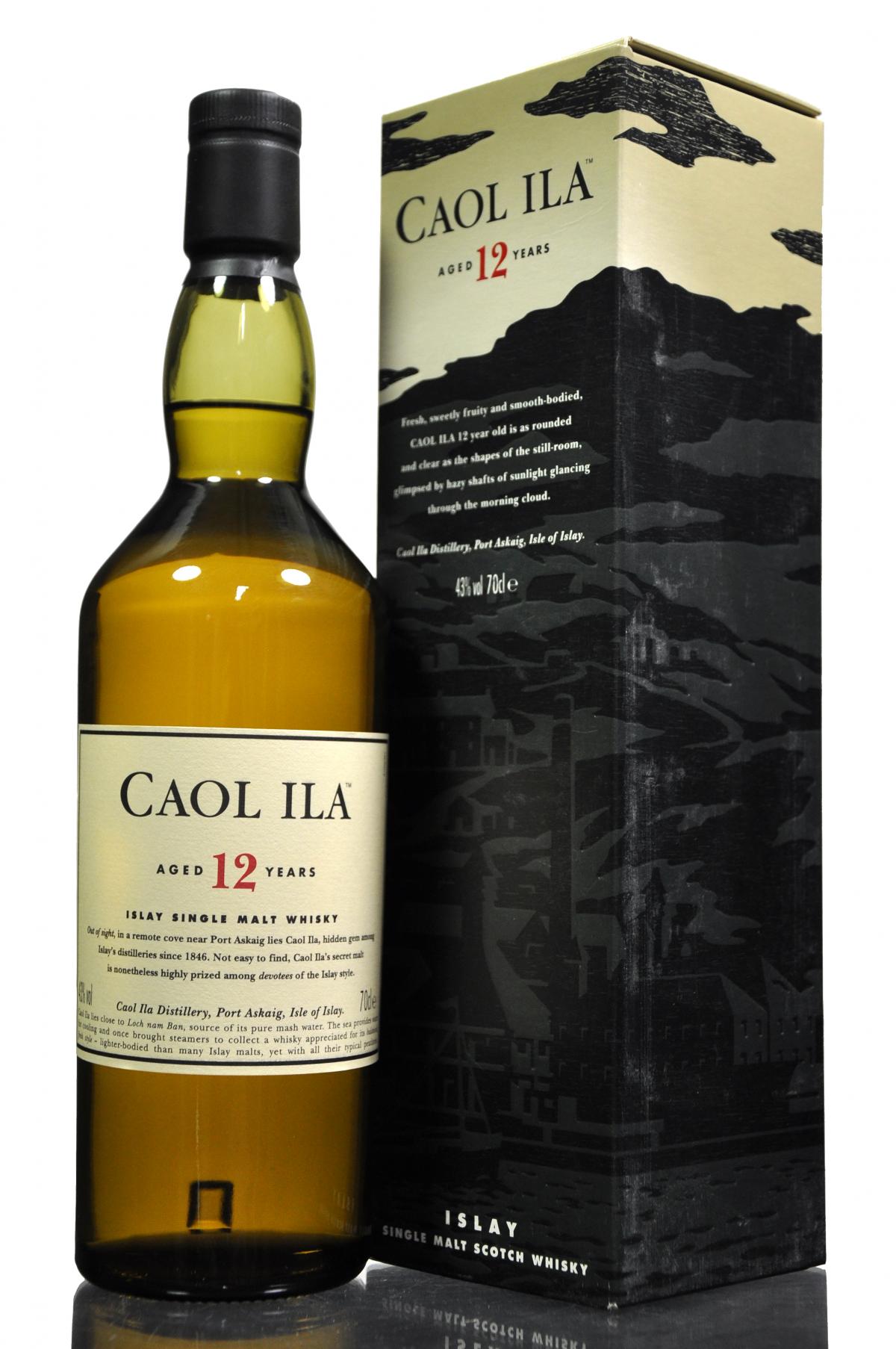Total Lots Sold:
15
View Lots
Do you have this bottle for sale?
SELL IT TODAYHAMMER PRICE OVER TIME
This graph displays data solely from Whisky-Online Auctions past sales history. Please note the filling level of the liquid and the condition of an item can affect the price negatively, so please check individual Lot sales below if there's a sudden dip in the graph.
HAVE ONE FOR SALE?
Submit your details along with an image and a description of your bottle. We'll then be in touch with the best way to proceed.
WHY SELL WITH WHISKY-ONLINE AUCTIONS?
0% Sellers Commission
Free Collections Available
Over 30 Years In The Whisky Industry
Over 1,700 Five Star Trustpilot Reviews
We Sell The Rarest Whiskies Ever Bottled
Global Buying Audience Including Far East Buyers
Bespoke Auction Platform
Thousands Of Active Bidders
Large Database Of Newsletter Subscribers
Over 36k Social Media Followers
Caol Ila 12 Year Old
Caol Ila 12 Year Old. 70cl. 43%.
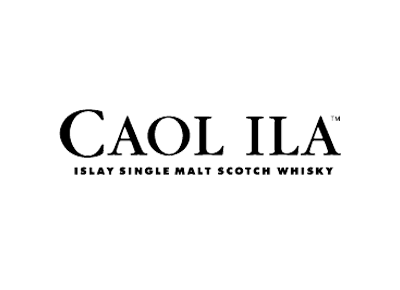
Founded in 1846, Caol Ila distillery was taken over by Diageo forerunner DCL in 1927. The distillery was completely rebuilt in 1972-74 and now produces over 6 million litres annually, much of which goes into Johnnie Walker. The widespread belief that Caol Ila is Islay’s most underrated distillery has become a truth so universally acknowledged that it may no longer be true, though it remains in the shadow of Bowmore and the south coast distilleries.
Official Caol Ilas were bottled sporadically before Diageo relaunched it as a single malt brand in 2002. A famous yellow label 12-year-old and a rare 15-year-old occasionally appeared under DCL’s Bulloch & Lade subsidiary from the 1960s onwards, and there was a short-lived Flora & Fauna 15-year-old in the late 1980s and a magnificent sherried 15-year-old Manager’s Dram bottled in 1990. Independent Caol Ila is abundant and always great value.

Distillery bottlings are, as the name suggests, bottled by or for the distillery from which the whisky has originated and are thus often referred to as Official Bottlings or OBs. Distillery bottlings are generally more desirable for collectors and usually fetch higher prices at auction than independent bottlings. They are officially-endorsed versions of the whisky from a particular distillery and are therefore considered the truest expression of the distillery’s character.
This ideal of the distillery character is regarded so seriously by the distilleries and brand owners that casks of whisky that are considered to vary too far from the archetype are frequently sold on to whisky brokers and independent bottlers. When this happens, it is often with the proviso that the distillery’s name is not allowed to be used when the cask is bottled for fear of diminishing or damaging the distillery’s character and status.



